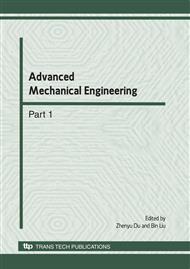p.285
p.289
p.293
p.297
p.303
p.310
p.315
p.320
p.326
Research of Reinforce Plan for No. Zero Frame of TB200 Aircraft and Secondary Damage Prediction
Abstract:
The original structure stress state of No. zero frame of TB200 aircraft is analyzed by finite element method. The stress and the reasons of the crack on the frame are determined. The numerical analysis results fit well with the actual damage of the frame, and the finite element analysis model is verified to be reliable. The stress state of the damaged frame structure is analyzed, which shows that the undamaged frame structure must be reinforced. The reinforce plan for the undamaged frame structure is given. The reinforced frame structure is analyzed by finite element method. The stress state and the residual strength of the reinforced frame structure are given. It is showed that the reinforce plan causes an obvious descent of the frame stress. The load is mainly distributed on the reinforcement of the No. zero frame. The residual static strength of the reinforced structure is higher than the original structure. The possible secondary damage position and mode of the reinforced structure are predicted.
Info:
Periodical:
Pages:
303-309
Citation:
Online since:
June 2010
Authors:
Keywords:
Price:
Сopyright:
© 2010 Trans Tech Publications Ltd. All Rights Reserved
Share:
Citation:


